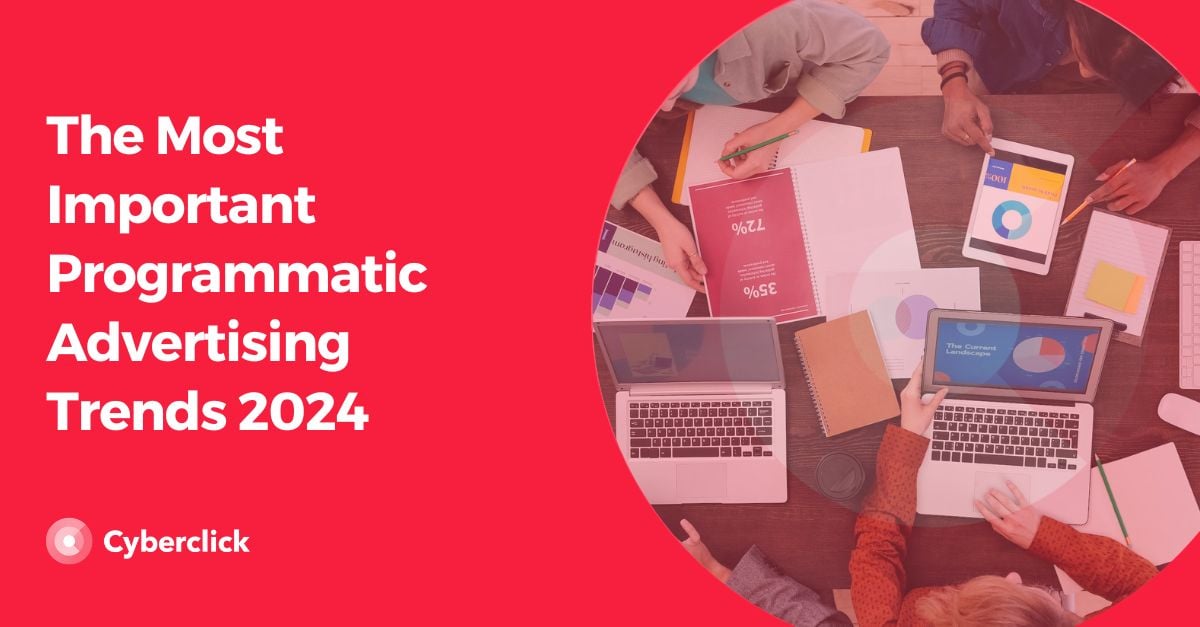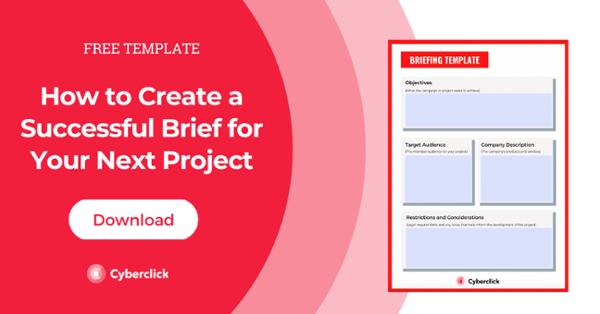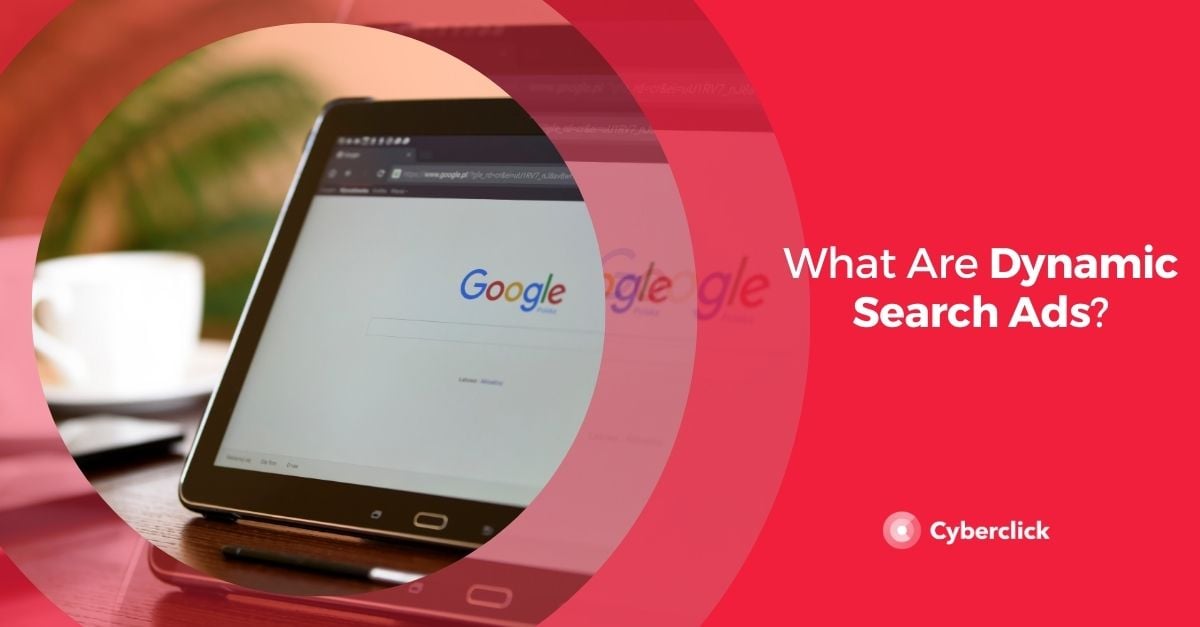Programmatic advertising revolutionized digital marketing upon its introduction, and years later, companies continue to increase their spending on this advertising format due to its consistently positive results. Anticipated to remain robust in 2024, programmatic advertising strategically displays ads to users using algorithms, their behavior, and history. If you're considering implementing it in your company or staying updated to enhance your results, read on to discover the programmatic advertising trends set to dominate the upcoming year.

The Biggest Programmatic Advertising Trends for 2024
The Growing Popularity of White Label Software
To understand this trend thoroughly (and the others as well), it's crucial to have a solid understanding of how programmatic advertising operates, as it involves a somewhat intricate process.
Programmatic advertising entails the automated purchase of online ad space. Advertisers or brands are the purchasers, while the owners, who can be media entities or "publishers," provide these spaces. Both parties operate through their respective platforms. Advertisers utilize Demand Side Platforms for buying ad spaces via real-time bidding, while media entities employ Supply Side Platforms, representing them and aggregating publishers' ad space inventory.
Given the multitude of DSD and SSP platforms, software plays a pivotal role in integrating them. This software offers numerous advantages, including the ability to submit direct offers across all platforms, real-time campaign data tracking, easy campaign adjustments, and heightened transparency. In essence, programmatic advertising software facilitates the management of this advertising type for both brands and media entities.
When it comes to programmatic advertising trends for 2024, there is an observable rise in the popularity of white-label software. This refers to generic software provided and produced by a business service, gaining traction among companies, especially newcomers, for its cost-effectiveness and robust service. Furthermore, companies can brand it as their own development.
Expanding In-House Programmatic Advertising Initiatives
A company can manage programmatic advertising in two ways: externally through another agency or internally (in-house).
If we look back 10 years ago, for example, very few companies could manage programmatic advertising, but today the situation is very different. Little by little, brands have wanted to promote this type of advertising and, to do so, they needed to have greater control over it. Along the way, they realized that managing this type of advertising internally has many benefits, both economically and in terms of efficiency. That's why this will be another of the trends in programmatic advertising for 2024.
These aren't the only positive aspects of internalizing programmatic advertising. Here are some additional benefits:
- Greater control: Managing this type of in-house advertising allows a company to control data in a more direct way and, therefore, increases the possibilities of making more exact segmentation.
- Focus on objectives: Eliminating intermediaries makes it easier for brands to put their objectives at the center and go after them.
- Improved ROI: Companies that manage their programmatic advertising in-house have a better chance of achieving a greater return on investment, since, in addition to all of the above, they can make more permanent optimization of the campaigns.
Fueling Programmatic Industry Growth with 5G
5G, or the fifth generation of cellular wireless technology, allows devices to have faster download and upload speeds and more consistent connections. In short, 5G has the potential to transform the way we use the internet. But what does all this have to do with programmatic advertising? Below are some examples of how 5G can impact this type of advertising:
- Higher resolution: An ad of higher quality and resolution is more attractive and, therefore, has a greater chance of converting.
- Less delays: A shorter loading time equals a better user experience, which also means that consumers are more likely to click on the ad and visit the page.
- Better visibility: Did you know that HubSpot's number one reason for installing ad blockers is to increase web page loading speed? With the introduction of 5G, the loading time itself will already be very fast, so fewer people will use ad blockers and therefore more users will see ads.
All of this will allow companies to achieve better results with programmatic advertising and, consequently, their market will be strengthened.
Programmatic Audio and Voice-Activated Advertising
Have you ever heard the term “programmatic audio”? Well, it's time to get familiar with it because it is going to be a major trend in programmatic advertising for 2024. But, let us start at the beginning.
You're probably familiar with platforms like Spotify or Podimo, known for audio content. Pages of this type are experiencing a surge, with an increasing number of people consuming audio content, including music and podcasts. In this context, a promising form of programmatic advertising has emerged, known as programmatic audio, where brands purchase advertising space specifically on audio content platforms.
Programmatic audio offers several advantages compared to visual programmatic advertising, such as:
- It is resistant to ad blocking.
- Listeners are usually a less distracted audience, so they can better grasp the advertisers' message.
- The audience of audio platforms tends to be much more loyal.
Closely related to programmatic audio, another trend in programmatic advertising for 2024 will be voice-activated advertising. Surely you know virtual assistants like Amazon's Alexa or Apple's Siri, that are capable of answering your question in seconds. Well, it is increasingly common to search with voice instead of text. This will cause changes in programmatic advertising, such as having calls to action in audio format or skipping entire ads of audios during a Google search.
In-Game Advertising
The online gaming market is getting bigger and bigger. There are console games, computer games, mobile games, streaming games and more. Advertising in these gaming environments presents a prime opportunity, particularly through programmatic advertising. Why? Primarily because advertising within games is relatively untapped, making it less saturated and allowing for more ambitious goals.
Another crucial aspect to consider is user attention. When people are gaming, their focus is notably higher compared to activities like listening to podcasts or music. This heightened attention creates a significant opportunity for advertisers to connect with their target audience more effectively.
In-game advertising stands out for its unique approach, where ads are integrated into the game itself, blending naturally with the environment. This method avoids disrupting gameplay, providing users with a better experience and making them more receptive to ads.
Lastly, programmatic advertising tailors ads to users based on their history, demographics, and interests. This ensures that users only see ads with a high likelihood of capturing their attention.
OTT and CTV Ads: New Programmatic Advertising Channels
Are you familiar with OTT and CTV advertising? If not, let's start by defining both terms.
OTT (over-the-top) advertising refers to ads that appear on platforms such as Netflix, Amazon Prime or Disney +, among others.
CTV advertising refers to ads which appear on what is known as connected television. These are devices that can access streaming content such as smart televisions.
Despite this difference, the terms are often used interchangeably, since OTT refers to the way the content is displayed and CTV refers to the device through which it is broadcast.
Whether you have seen a livestream on Twitch or an episode of your favorite series on Amazon Prime, you have surely experienced this type of advertising.
However, the important thing is that these types of ads will be growing trends in programmatic advertising for 2024, mainly due to the growth that streaming platforms have had in recent years, being one of the causes (among others) of the decrease in television advertising.
Programmatic ads with OTT and CTV advertising having many advantages such as:
- Advanced segmentation.
- Wide audience reach.
- Advanced analysis and measurement.
- Possibility of putting hyper-targeted advertising into practice.
Post-Cookie Segmentation and First-Party Data
When discussing programmatic advertising trends for 2024, the issue of third-party cookies cannot be overlooked. In case you're not well-versed in the topic, let's quickly get you up to speed. In computer terminology, cookies are code fragments sent by the websites a users browser. They facilitate tasks such as remembering browsing history and avoiding the need to log in every time a user accesses their profile on a website.
Cookies can be classified based on two main categories:
- First-party cookies: Used by a website and designed by the website itself.
- Third-party cookies: Requested by other companies to be installed on a user's computer through a website.
Both types of cookies provide information about a user's history to the website owners and third parties, making them fundamental in programmatic advertising.
Due to privacy concerns, third-party cookies are gradually disappearing, significantly impacting programmatic advertising. It's crucial to consider this shift when developing advertising strategies of this nature.
Moreover, 2024 is poised to be the definitive year when Google permanently eliminates third-party cookies, although previous delays have fueled skepticism about the finality of this date.
So, what happens to programmatic advertising when third-party cookies vanish? The spotlight turns to their counterparts, first-party cookies. Companies in the programmatic advertising realm will need to adapt, but there's no cause for concern. First-party cookies can still provide valuable data without compromising user privacy.
The silver lining is that advertising software companies are proactively addressing this shift and offering solutions to brands in a cookieless landscape.
Licenciada en Publicidad y Relaciones Públicas por la UAB. Digital Marketing Strategist en Cyberclick.
Degree in Advertising and Public Relations from the UAB. Digital Marketing Strategist at Cyberclick.






Leave your comment and join the conversation